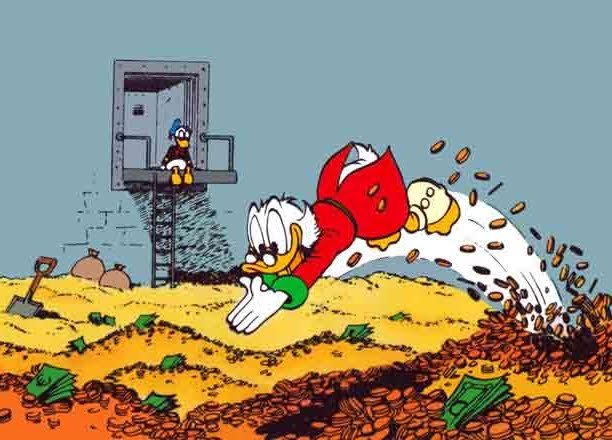You need basic financial literacy in order to run a company.

You should be able to understand basic financial terms and instruments. As most people don’t have financial background, I’ve tried to simplify some of the key terms below.
BALANCE SHEET
The balance sheet is a snapshot of the financial position of your company at any given point in time.
On the right hand side it lists liabilities and equity (also known as capital and reserves or shareholders’ funds). Liabilities are what your company owes, equity is what is remains after your debts have been paid, which is the value of the company in accounting terms. The balance sheet is called a balance sheet because the left and right hand sides must balance because of the following rule:
Assets = Liabilities – Equity or Equity = Assets – Liabilities
This is just another way of saying that what you have minus what you owe is what you have left.
PROFIT & LOSS STATEMENT
The P&L (or Income Statement) explains how the balance sheet changed from one period to another.
In other words it outlines how assets and liabilities changed due to operations. The net change in these then necessarily affects shareholders’ equity. If assets increased more than liabilities, you’ve made a profit which goes to the shareholders.
GROSS MARGIN
The profit and loss starts by outlining gross margin (sometimes called gross profit). Gross margin measures the basic profitability of your product or service sales (the top line) ignoring expenses which are not directly related to the manufacture or provision of services:
Gross Margin = Revenue – Cost of Sales
This is a useful measure because it shows the basic profitability of your business. It shows how much money each product can contribute to paying non-product costs, which is why the gross margin on a product or service is also known as contribution margin. You will be expected to know the gross margin of your products or services.

COST OF SALES
The cost of your products and services are divided into two categories: fixed and variable.
Let’s imagine I start a business publishing a newsletter. In order to do so, I rent a printer and a computer, and hire someone to deliver copies, paying them according to the number of newsletters delivered.
My variable costs would be those that increase according to the number of copies I produce. For example paper, printer cartridges, delivery. My fixed costs would be those that are also necessary to produce the newsletter but remain the same regardless of the volume of copies I produce, such as the computer and printer rental.
BREAKEVEN
Why does the distinction between variable and fixed costs matter? Because the distinction is essential when it comes to managing risk, especially the risk that is due to uncertainty about the level of demand.
Variable costs are less risky than fixed costs because you only incur them as and when you have demand for your product or service. But fixed costs are riskier because they are fixed. Once you have committed to them (by deciding to rent the printer for example) you have to pay for them even if demand is zero.
When you are initially launching a product or service you should keep your costs as variable as possible to minimise risk. But once you can predict your demand accurately enough to know that you will have enough revenue to cover fixed costs you should switch to a fixed cost strategy insofar as possible and minimise your variable cost.
Why? For example, imagine you are producing a song and selling mp3 files. You have high fixed costs such as studio and musician time. If you don’t know whether the song is successful, you would prefer to negotiate a deal where you pay the studio owner and the musicians nothing upfront and pay them a percentage of the track revenue depending on how many are sold. Your costs would then be entirely variable and you would have no upfront risk.
But if you know demand is going to be huge, you would prefer to pay the musicians and the studio a fixed upfront cost and have no variable costs. Once you’ve sold enough tracks to pay for this upfront fixed cost, you would get 100% of the revenue as there would be no variable costs.
In order to make this decision you need to know what your breakeven point is, which is calculated as follows:
Calculate your variable contribution margin which is Price – Variable Costs. This is the amount each unit sale contributes towards fixed costs and/or profit.
Your break-even point is then Fixed Costs/Variable Contribution Margin. Until you reach this point, you are losing money because you haven’t covered your costs. Once you exceed this point, you’ve covered your fixed costs and the variable margin per unit goes to profits.
OPERATING EXPENSES
The break-even analysis only considered fixed product or service costs. But there is one further category of costs that need to be considered in break-even analysis: operating expenses. These are expenses which are not related to producing your product or service, and therefore do not vary with volume.
Examples are administration, marketing expenses, etc. These are discretionary insofar as you decide to budget for them or not. They may be variable, but they do not vary according to sales volume. If they are fixed, they are only fixed within a certain range of time.
CASH FLOW

It is extremely easy for a business to go bankrupt because it succeeds in achieving significant sales growth – even if its costs are low enough to make these sales profitable.
This happens because of a failure to understand the difference between profit and cash flow and manage the latter carefully.
For example, let’s say I’m a caterer targeting the corporate market. I’m commissioned to cater an event for £10,000. My costs (food, staff, etc.) for the event are £5,000. So my profit for the event is
£10,000-£5,000=£5,000.
But I have to go out and pay cash for all my costs upfront, where as my corporate client takes 45 days on average to pay me. This means that my cash-flow in the first month of operations is negative, even though I’ve made a profit of £5,000.
My client likes my catering so much that in month 2, they ask me to cater three further events.
My sales and my profits have now tripled to £30,000 and £15,000 respectively. But my cash-flow is now getting worse:
Beginning cash balance: -£5,000
Cash Inflow: +£10,000 (payment of 1st month’s invoice)
Cash outflow: -£15,000 (event costs)
Net cashflow= £10,000-£15,000=-£5,000
Ending cash balance= -£5,000-£5,000=-£10,000
As you can see, the business’ growth and profitability is great, but it will go bankrupt unless it secures funding to cover the increasingly negative cash-flow. This is why it is essential to project and monitor cash-flow as well as profitability.
More to come - stay tuned!
Check out previous parts:
Part 1 - Intro
Part 2 - Minimum Viable Segment
Part 3 - Job Story
Part 4 - Market Size
Part 5 - Value Proposition
Part 6 - MVP
Part 7 - Customer Adoption Journey
Part 8 - Marketing Tools
Part 9 - Differentiation
Part 10 - Team, Assets & Partnerships
